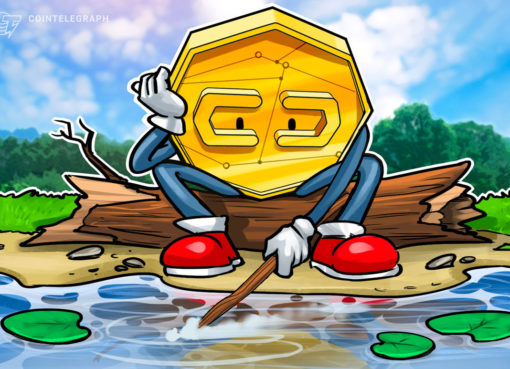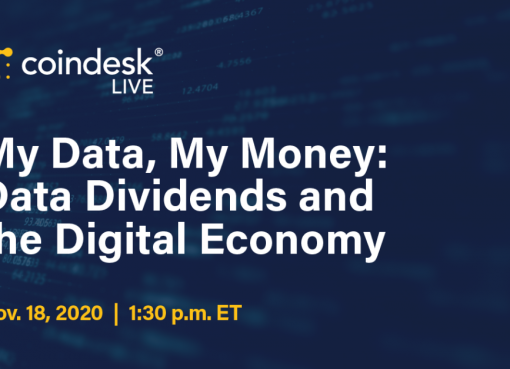We often talk about central banks creating fiat money. In fact, most fiat money is not created by central banks but by commercial banks. Furthermore, not all of the banks that create and hold fiat money are regulated banks. Many are what we know as “shadow banks.” In the cryptocurrency network, there is a whole shadow banking industry creating and holding fiat money, or something that looks very much like it.
Shadow banks are financial institutions that do bank-like things but aren’t subject to banking regulations. They include investment banks, non-bank lenders, money market funds, private equity and hedge funds, and insurance companies. They also include special purpose vehicles (SPVs), which are subsidiary companies created by regulated banks to enable them to do unregulated things. And they include banks headquartered outside the U.S., notably those in offshore jurisdictions.
Frances Coppola, a CryptoX columnist, is a freelance writer and speaker on banking, finance and economics. Her book “The Case for People’s Quantitative Easing,” explains how modern money creation and quantitative easing work, and advocates “helicopter money” to help economies out of recession.
The “shadow dollars” created and held by shadow banks are known as eurodollars. “Euro” here doesn’t refer to the euro currency and doesn’t have much to do with Europe. Eurodollars nowadays tend to live in places like the Cayman Islands and the Bahamas.
Because eurodollars are held outside the U.S. regulated banking system, they do not have FDIC insurance and the institutions in which they are held have no backing from the U.S. Federal Reserve. Really, they are “faux dollars.”
To their users, however, eurodollars are indistinguishable from real dollars created by the Fed and U.S. regulated banks. And when eurodollars flow from the shadow banking system into the regulated system, they become real dollars. Conversely, dollars created by the Fed and regulated U.S. banks become eurodollars when they are sent to offshore or foreign locations. The system works as long as the 1:1 implied exchange rate between eurodollars and real dollars holds. But when the peg fails, there is chaos.
Tether’s bank, Deltec, is part of the shadow banking network. It is located in the Bahamas, an offshore jurisdiction beyond the reach of U.S. regulation, and it holds U.S. dollar deposits. Deltec Bank is not backed by the Federal Reserve, and the U.S. dollars it holds have no FDIC insurance. So Tether’s deposits in Deltec Bank, including the cash reserves that Tether says back USDT tokens, are eurodollar deposits.
Deltec Bank might hold cash reserves in one or more U.S. regulated banks. But these reserves may not be sufficient to back all of its eurodollar deposits. And even if they are, dollars in regulated bank deposit accounts are not “in custody.” They are loaned to the bank and only insured up to the FDIC limit of $250,000 per customer per institution. Anyway, FDIC insurance only applies to deposits in regulated banks, not to deposits in offshore shadow banks, even if those shadow banks are customers of the regulated banks. If Deltec Bank failed, there would be no FDIC insurance for its depositors. Tether’s guarantee that 1 USDT = 1 USD therefore entirely depends on Deltec Bank remaining solvent.
See also: Pascal Hügli – Hyper-Stablecoinization: From Eurodollars to Crypto-Dollars
It’s not just Tether that relies on shadow banks. In a recent interview, Tether’s chief technical officer, Paolo Ardoino, said that not only Tether itself but the cryptocurrency exchanges that are its principal customers have U.S. dollar accounts at Deltec Bank.
Some of these exchanges might use Deltec Bank as their settlement bank. But others might simply have accounts at Deltec to make paying for Tethers more convenient. Instead of wiring U.S. dollars to Deltec Bank every time they need to top up their tethers, they can simply fund their Deltec account whenever it suits them and use the balance to pay for more tethers. But whichever approach they use, the money they keep on deposit at Deltec Bank is not FDIC insured and not backed by the Fed. And if their own settlement banks are also shadow banks, then any money they have with those is not FDIC insured or Fed-backed either.
The collapse of the money market fund Reserve Primary … shows how disastrous the breaking of an implied exchange rate peg like this can be.
Not only do Tether and its crypto exchange customers rely on the fiat shadow banking network, they are themselves part of it. And other stablecoin issuers are, too. Just as Tether guarantees that 1 USDT = 1 USD, other stablecoin issuers similarly guarantee that their coins are equivalent to U.S. dollars. They even call them U.S. dollars: USDT means “USD tether,” USDC means “USD coin,” and so on. But stablecoins are, with few exceptions, created by unregulated financial institutions that have no FDIC insurance and no Fed backing. Really, stablecoins are “faux dollars.”
See also: Frances Coppola – The Stablecoin Surge Is Built on Smoke and Mirrors
Whether stablecoins like USDT and USDC can be exchanged 1:1 for U.S. dollars depends entirely on the existence of adequate U.S. dollar reserves and on the solvency of the banks that hold those reserves. If there aren’t enough actual dollars to pay all those who want to withdraw their funds, the 1:1 exchange rate peg will break and coin holders won’t be able to get all of their money back.
The collapse of the money market fund Reserve Primary during the 2008 financial crisis shows how disastrous the breaking of an implied exchange rate peg like this can be. Investors in a money market fund pay dollars in return for shares in the fund. Until 2008, money market funds marketed themselves as high-interest versions of insured U.S. bank deposits. There was a widespread belief that shareholders would always be able withdraw what they put in, that no fund would “break the buck.” So, 1 share = 1 USD. Sounds rather similar to a stablecoin, doesn’t it?
Reserve Primary MMF didn’t have 100% cash reserves backing its shares. It had invested in commercial paper issued by, among others, the shadow bank Lehman Brothers. When Lehman Brothers failed in September 2008, the value of its commercial paper crashed to zero and Reserve Primary MMF could no longer guarantee the 1:1 peg. It announced to its shareholders that it could only return 97 cents for every dollar they had invested.
Reserve Primary MMF’s announcement, hard on the heels of the failure of Lehman Brothers and the collapse of the insurance company AIG, sent shockwaves through the financial system. Massive amounts of money ran from the shadow banking network into regulated banks and U.S. Treasurys. To stop the run, the Fed bailed out the shadow banking network, reinstating the broken peg and restoring confidence in eurodollars.
See also: JP Koning – What Tether Means When It Says It’s ‘Regulated’
Like Reserve Primary MMF’s shareholders, cryptocurrency traders treat stablecoins as simply a variety of U.S. dollar. Of course, traders know the exchange rate is not guaranteed, and not all stablecoin issuers have 100% cash reserves. But, hey, the Fed bailed out shadow banks before, didn’t it? Why wouldn’t it bail out stablecoins?
Unfortunately for crypto traders, stablecoins and their banks are nowhere near as dangerous to the global financial system as Lehman Brothers, AIG, Reserve Primary MMF and the rest of the shadow banks that crashed in 2008. If Tether goes down, the crypto market will be seriously disrupted, but the rest of the world will hardly notice. And few people are going to lose any sleep over a small Bahamian bank failing.
Neither the Fed nor the FDIC has any reason to ensure crypto traders can get their U.S. dollars out of the stablecoins and exchanges in which they have deposited them. The credibility of the promises made by crypto shadow banks thus depends entirely on the adequacy of their reserves. Sadly, this seems to be enormously variable. So “caveat depositor,” we might say. Choose your stablecoin carefully.




